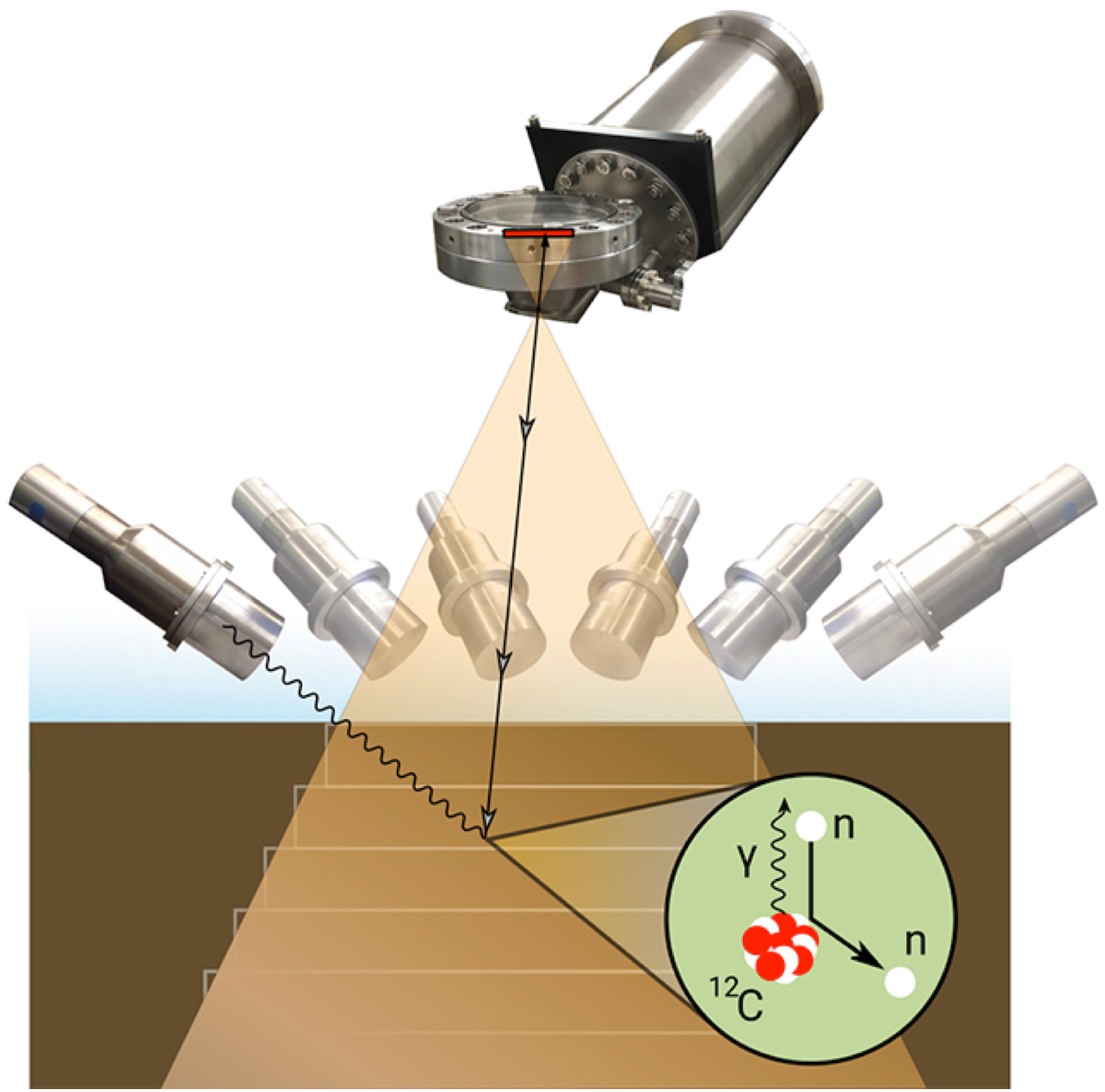
Soil imaging with neutrons can provide a fast and detailed image of the amount and distribution of carbon (and certain other important elements) in soil without disturbing the soil or plant roots.
Associated Particle Imaging, or API, is a nuclear spectroscopy technique in which a deuterium-tritium fusion reaction creates a neutron and an alpha particle. Due to the kinematics of these reactions, the neutron and the alpha particle move in opposite directions. This makes it possible to infer the direction the neutron is moving by measuring the alpha particle. The neutron can then interact with a target material—for example, through inelastic scattering, which releases a gamma ray with an isotope-specific energy. Detecting the timing and energy of this gamma allows us to create 3D maps of the target area.

Researchers make adjustments on the Associated Particle Imaging (API) Test Stand.
We use this technique for several applications. For example, we are developing an instrument to measure the carbon content of soil cores and the distribution of carbon and other elements in soil. Since we can measure the alpha flux very accurately and because API allows strong background suppression, we can accurately measure the cross sections of inelastic 14 MeV neutron scattering events. We are also exploring how API can be applied to planetary science and future NASA missions.